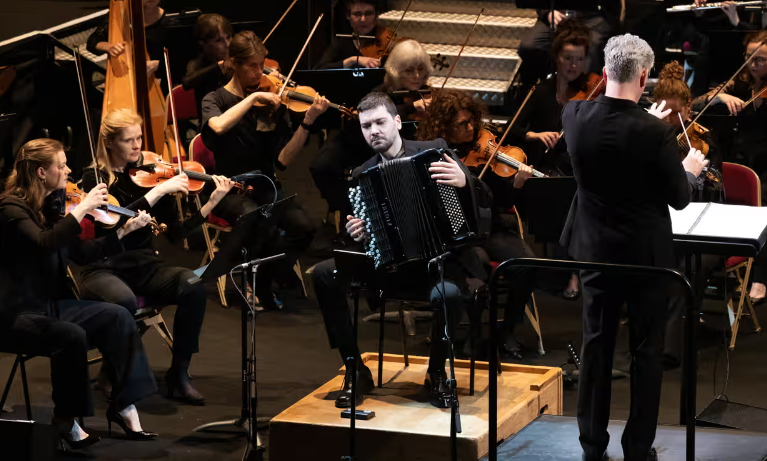
Erica Jeal
Fri 15 Mar 2024 08.11 EDT
Battersea Arts Centre, London
Danielle de Niese took on twinned roles of dancer and singer Anna with great style, the evening introduced by João Barradas’s fiery accordion

The cathedral-like space of Battersea Arts Centre’s Grand Hall, with its high ceilings and distressed walls, is an atmospheric place for the London Philharmonic to decamp to for this performance of The Seven Deadly Sins, the 1933 “sung ballet” that was Kurt Weill and Bertholt Brecht’s last collaboration. That said, prosaically enough it would probably have worked better back home in the Royal Festival Hall. All those unbroken hard surfaces at the BAC make for a cathedral-like acoustic: pitted against a full orchestra, playing with bite and swing for the conductor Edward Gardner, all five singers had to be miked, and the sound system was blunt. Singing the English version by WH Auden and Chester Kallmann, they worked hard but far too much text and nuance got lost.
At least in Danielle de Niese there was a lead who could carry the show regardless. The role of Anna, who travels round the US losing her Louisiana innocence in order to make money for her family back home, was written to be played by two people, a singer and a dancer: de Niese embodied both. Directed by Dominic Dromgoole, and moving between the front of the stage and platforms to the side and back, de Niese seemed also to play the men who commodify Anna – at least with her hands, which she managed to make seem as if they belonged to someone else. The Greed episode saw her working her way cynically round the men of the orchestra, pocketing tips. Her Greek-chorus family included Adam Gilbert’s clear tenor Father and the resonant bass Callum Thorpe as the drag Mother.

Part of an intense two-week series highlighting the scope of the orchestra’s work, the concert had begun with the UK premiere of Luís Tinoco’s Accordion Concerto, written last year for João Barradas. It begins with chords that stretch both audibly and visibly, the accordion slowly flexing its muscles; the dominant mood is dark and noirish, with cyclical sequences of notes tumbling evenly out like something electronic unravelling, until, after a long crescendo, the wheels come off. Here Barradas punched the accordion keys in gestures that, musically and visually, were violent yet still elegant. It was a powerhouse performance of an engaging new work.

Leave a Reply